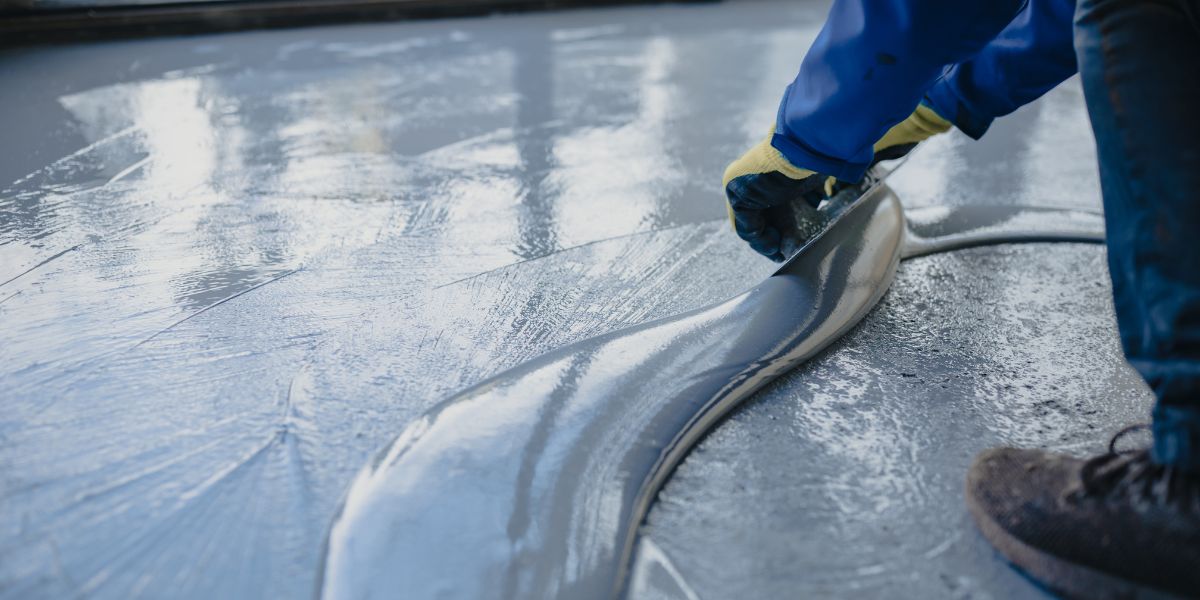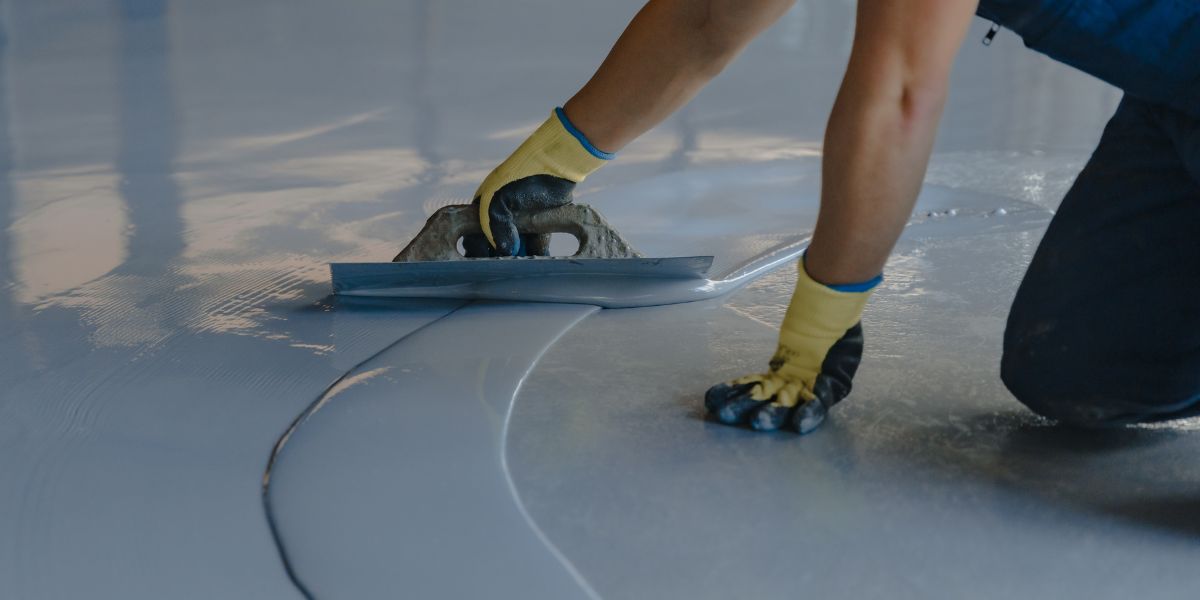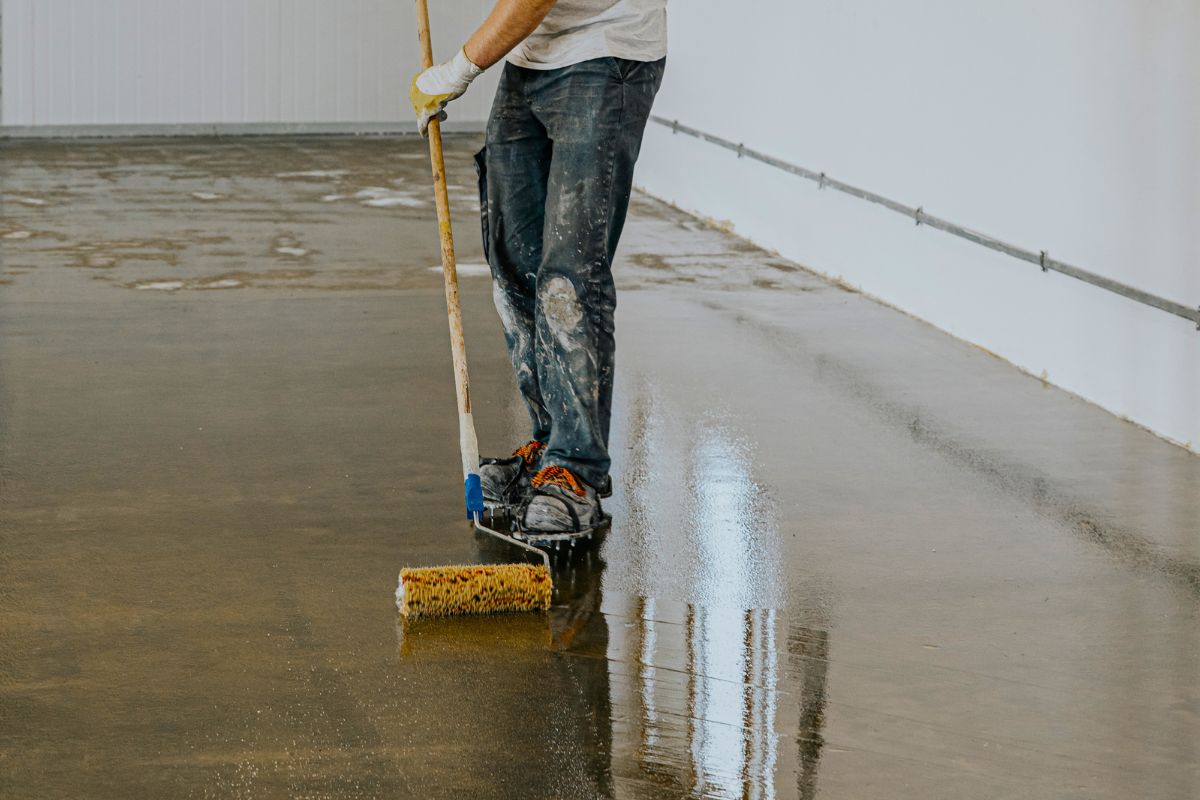Choosing Between Epoxy and Polished Concrete: Which Is Right for You?
Using our analysis of both flooring types you should determine which one fits your unique situation best. Let’s break it down into key factors:
1. Purpose of the Space
Commercial and Industrial Settings: Epoxy remains your top choice when setting up industrial warehouses and workshops. Its ability to resist chemicals while holding up under tough operations makes epoxy the safest flooring choice for demanding spaces.
Residential Settings: To create a sleek modern home style polished concrete will deliver better results. This smooth surface looks good in all residential areas including common spaces plus personal rooms. Polished concrete provides greater design opportunities for people who seek unique floor solutions.
Outdoor Spaces: Damage happens when you use both epoxy and polished concrete in outdoor conditions. Exposure to sunlight changes epoxy UV light but polished concrete shows a higher damage risk under weather conditions. Outdoor installations need a thorough examination of both weather situations and environmental conditions.
2. Budget
Although epoxy flooring uses cheaper materials it requires more expensive installation work than other options. The more expensive beginning costs of polished concrete make way for its lasting durability and almost no upkeep requirements.
3. Maintenance and Upkeep
Each material delivers outstanding low-management flooring without much effort. Both epoxy and polished concrete floors stay stain-free and need easy upkeep through simple floor cleaning methods. When your floor needs resistance to chemicals and minor repairs epoxy flooring shows advantages over polished concrete.
4. Epoxy Flooring and Environmental Concerns
During installation and curing epoxy flooring requires chemical products that produce volatile organic compounds known as VOCs. The modern epoxy system design and low-VOC options help reduce chemical exposure but experts should consider these factors more.
Epoxy floors can serve longer than other flooring types which over time cuts back on materials waste and replacement expenses. Strong epoxy floor coating performs well under constant use which reduces repairs and lowers the impact on the environment as it continues to serve the floor for years.
5. Sustainable Flooring Option
Polished concrete stands out because it supports environmental stewardship more than other options. Using existing concrete bases saves both time and materials because no extra products need to be added during installation. Polished concrete keeps the floor surface natural while producing an eco-friendly option among flooring choices today.
Because polished concrete avoids synthetic materials while reflecting light it lowers power consumption for interior lighting. When you want to build sustainably and care for the environment, polished concrete is an ideal choice.
6. Temperature Regulation
An epoxy floor reacts to high and low temperatures through expansion or contraction. Greater floor movement happens when epoxy gets exposed to extreme temperature shifts, especially in areas with big temperature changes. Epoxies keep their cured form without changing shape. Epoxy floors show less-than-optimal performance in areas with frequent hot temperatures because repeated heat exposure weakens the surface.
As a non-insulating material epoxy makes the floor surface feel cool to touch during the winter season. The flooring will perform better if you install radiant heating below the epoxy system to overcome cold temperatures in winter months.
7. Insulation Challenges
Polished concrete floors exhibit temperature management features similar to those of other finished concrete floors. The natural insulation quality of concrete material makes it feel cold to touch in winter weather conditions. Polished concrete tends to hold heat better in areas with lots of natural light which makes it a perfect flooring option for those spaces. During warm weather the concrete floor stores and saves coolness to enhance comfort levels.
To enhance polished concrete thermal comfort you should put radiant floor heating systems underneath. Radiant floor heating systems installed beneath concrete floors give warmth to reduce its uncomfortable chilly touch in winter months.
8. Resale Value and Long-Term Investment
Residential homeowners may see either positive or negative effects on property value when they apply epoxy flooring. Epoxy serves as a reliable choice in utility settings yet many prospective buyers prefer conventional and elegant flooring materials for their living spaces. Installers of homes discover epoxy floors helpful but they conflict with the tasteful requirements of elegant properties.
If your property features a sizable garage workshop space then potential buyers seeking these practical benefits will value the epoxy flooring system as a home selling point.
Polished concrete provides a top-tier elegant contemporary design option that increases the resale value of residential spaces. Customers select polished concrete because its smooth surface presents a beautiful contemporary design. Homes with polished concrete floors are popular with buyers who prefer simple urban or contemporary designs. Buyers focused on green choices will appreciate polished concrete because it works well with environmental goals.
Properties in urban settings or modern architectural neighbourhoods benefit from polished concrete floors which boost property attractiveness and create market distinction. Polished concrete works best if you plan to hold your property for a long time and improve its market value.







